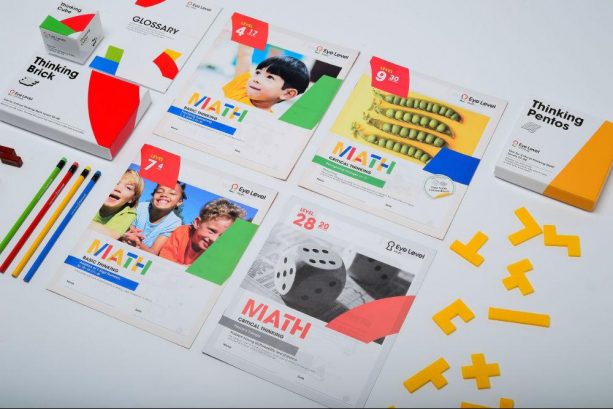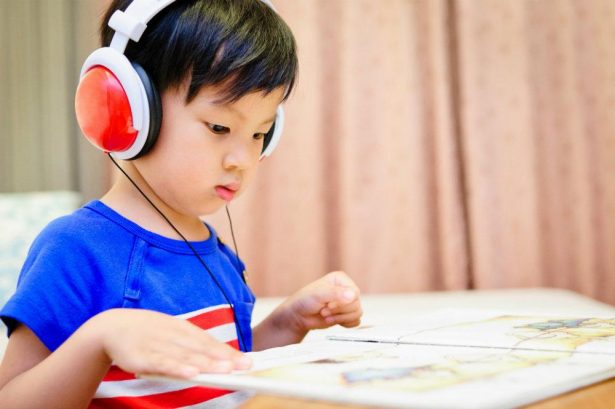Hands-on Learning with Eye Level
by on 02/08/2017 ...

Eye Level is a supplementary maths programme practiced by over 2.5 million students worldwide.
It combines basic thinking maths with challenging word problems, spatial reasoning puzzles and critical thinking activities. This innovative curriculum is a balanced programme of study that effectively develops all areas of mathematical reasoning in a child.
The programme contains 32 levels of maths study; covering a variety of topics typically taught in elementary and lower secondary schools. In addition, Eye Level MATH introduces students to more advanced work in algebra, geometry, set theory, probability and statistics.
The developers of Eye Level MATH recognized the importance of hands-on learning, therefore math manipulatives and logic puzzles are a vital part of the programme.
Depth perception, spatial reasoning and analytical thinking skills are developed through problems sets that incorporate three dimensional learning tools such as the Blocks and Shapes, Coloured Blocks, Wooden Blocks and many other teaching tools.
The Eye Level MATH curriculum provides a truly balanced programme of learning. Like other supplemental programmes, it develops strong computational skills from basic arithmetic through advanced algebra.
What makes Eye Level MATH unique, however, is the way the programme develops mathematical reasoning and critical thinking skills. Eye Level MATH incorporates teaching tools and problem sets that encourage students to explore math concepts in greater depth.
Through hands-on exploration and practice, students learn how to analyse and solve complex, but age appropriate, math problems.
BASIC THINKING MATH
Students develop strong computational skills throughout the Eye Level MATH programme. Young students learn how to add and subtract numbers with emphasis given on both speed and accuracy because knowing and mastering something is two different issues. From mastering maths, students develop multiplication skills and discover the relationship between multiplication and division.
Fraction, decimal and percentage concepts are studied next. The basic four operations of arithmetic are applied and the order of operations is learned. After successful completion of this unit, students begin their study of algebra.
Throughout the programme, students strengthen their understanding of place value and number sense.
CRITICAL THINKING MATH
Problem solving and critical thinking are the next step of mathematics study and the real reason of learning maths in the first place but often sidelines.
Without these skills, students cannot advance to greater heights in maths.
It is understood that by learning the basic steps in maths using the knowledge we have, we should explore different aspects and ideas of maths such as Reasoning and Problem solving challenges. The main critical thinking topics include word problems, Patterns & Relationship, Depth Perception, Measurement and Reasoning.
Under these five categories of learning, the student will be able to excel in the following fields:
A. World Problems
Students learn to solve word problems early in the Eye Level MATH program. At each level of computation, students are challenged to apply math concepts from basic word problems and gradually moving on to complex word problems.
Problem solving strategies such as drawing a picture, making a chart and working backwards are introduced and practiced. The Eye Level worksheets are designed to guide students through the problem solving process one step at a time.
B. Patterns and Relationships
Patterns and Relationships are taught at a very early stage in the Eye Level programme. Young students are given many opportunities to analyse and solve visual patterns such as shape patterns, colour patterns and many others. Older students focus more on number patterns. Advanced pattern work includes geometric an algebraic relationships.
C. Geometry
Concepts related to geometry appear throughout the Eye Level programme. Young students identify and complete shapes, solve problems based on the perimeter and area of shapes, and develop depth perception through practice rotating and transforming figures.
Older students explore properties of three-dimensional shapes and solve complex problems involving triangles, circles and other complex shapes. Advanced concepts in geometry include problem sets involving the Sierpinski triangle, Soma cube, and Koch snowflake.
D. Algebra
Algebraic reasoning is developed through a variety of exercises. Early in the programme, students are challenged to find the missing part of number and to search for patterns and relationship. Balance scale problems strengthen students’ understanding of equality and function machines help students identify mathematical operations. Functions are more rigorously studied later in the programme and the connection between algebra and geometry are made.
E. Data Interpretation and Probability
Data is presented in a variety of ways including circle graphs, line graphs, stem and leaf plots, Venn diagrams and box and whisker plots. Students learn how to analyse data presented in each format and answer questions based on that information. Probability is explored throughout the information. Probability is explored throughout the programme. Counting methods such as tree diagrams, combinations and permutations are studied.
*************************************************

Article contributed by Eye Level Malaysia. Check out Eye Level website and centre locations to learn more.


























